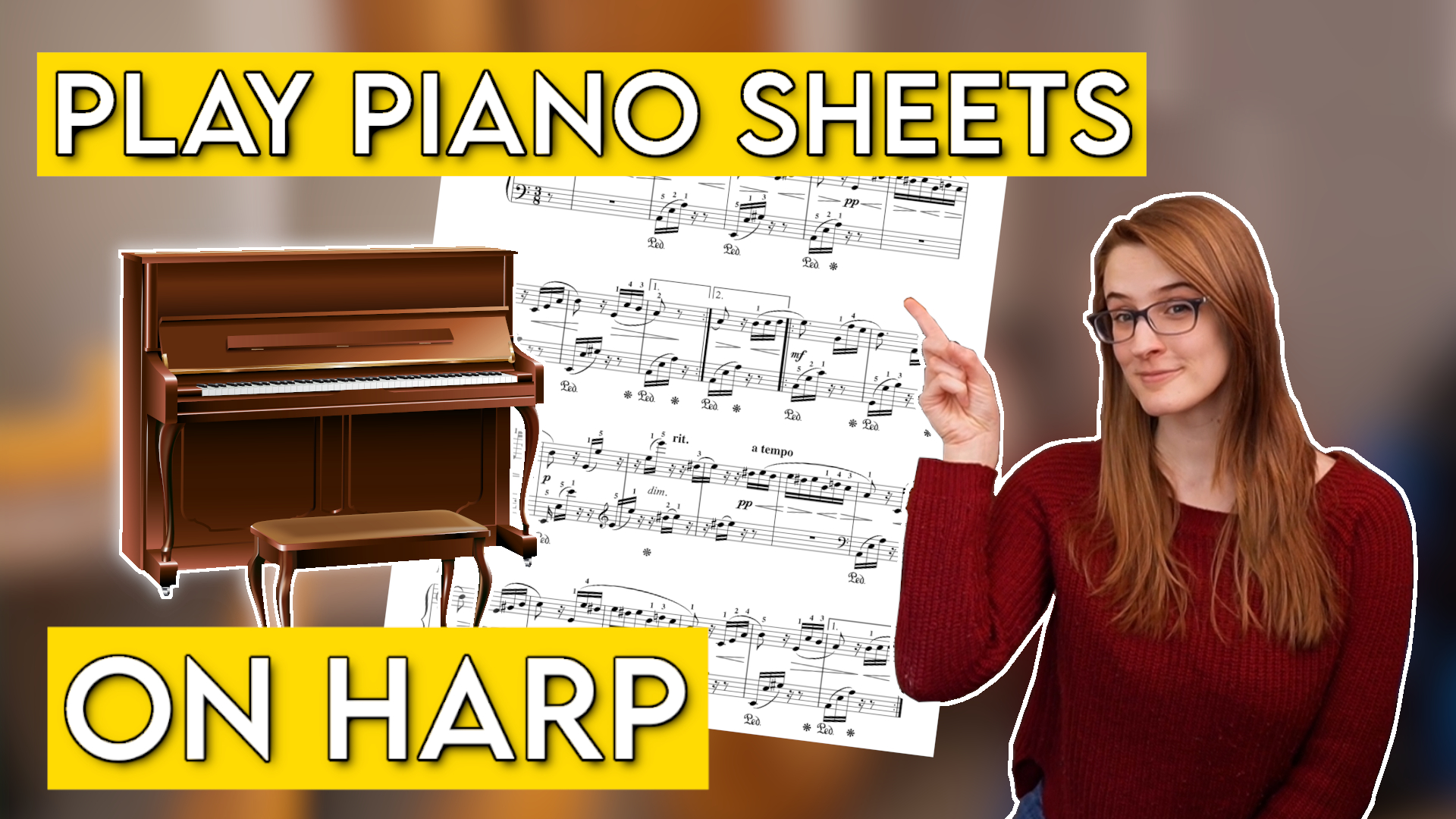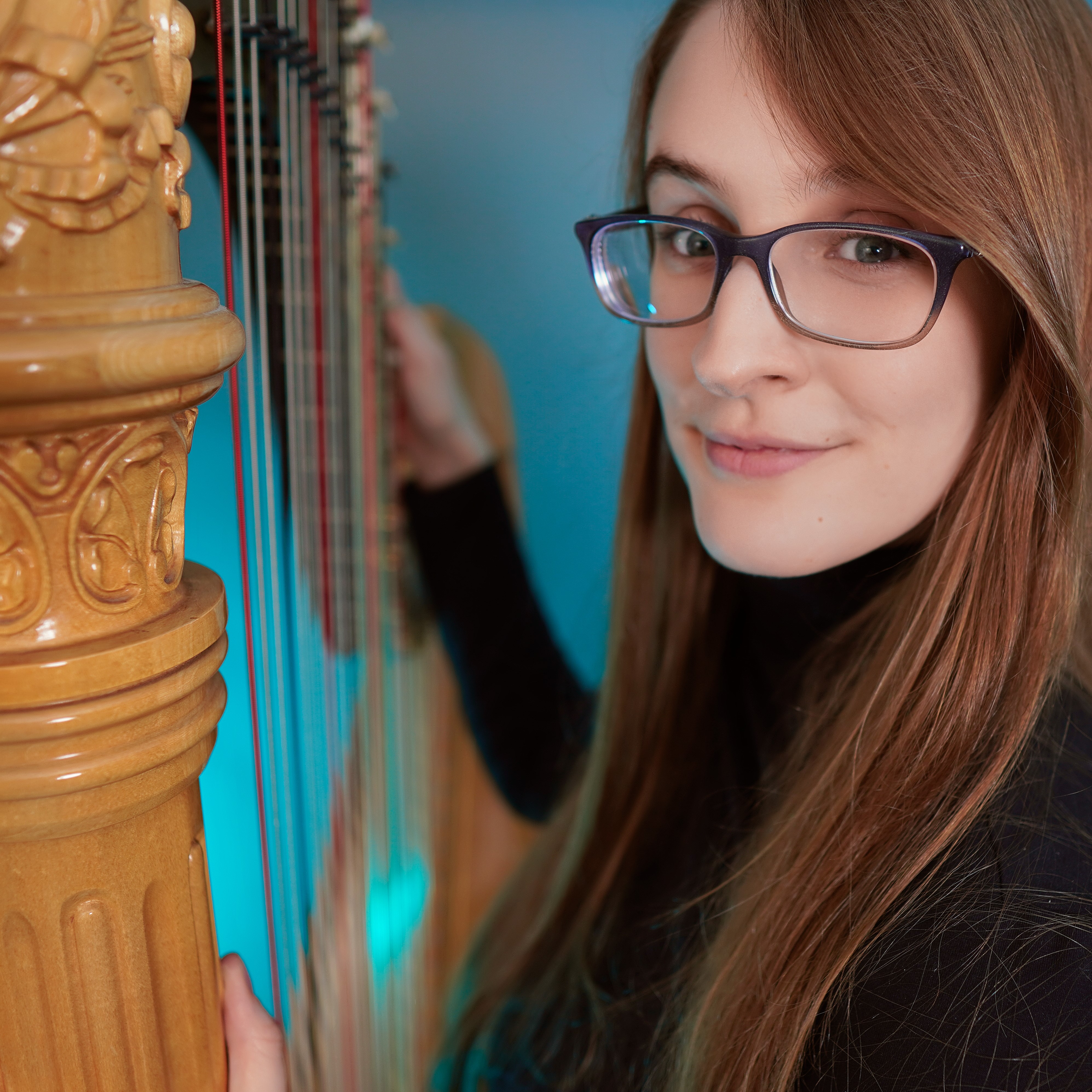
How to Adapt Piano Sheet Music for Harp
As harpists we all know that the sheet music out there for harp is not exactly plentiful. And while it is getting better, sometimes the only thing you can find is piano sheet music.
You can absolutely play off of piano sheet music because it looks the same with the grand staff and same notation, but you may need to make some adjustments to make it harp friendly. In this guide, we'll explore key considerations and practical techniques for adapting piano sheet music to the harp.
Key Considerations
The first thing to check when adapting piano music for harp is the key.
For Pedal Harps
If you're playing a pedal harp, the key signature is less of an issue. However, if the original key has a lot of sharps, it may be more comfortable to transpose it to a key with flats. This is particularly useful when the music contains many double sharps, which can be awkward to manage.
For Lever Harps
If you play a harp with levers (or no levers), you’ll need to ensure that the key is playable on your instrument.
Harps with a full set of levers can generally accommodate keys with up to three flats or four sharps.
If your harp has fewer levers or none at all, double-check that the key signature is within your range.
If the original key isn’t playable, transposing is an option. Some websites, like Musicnotes, allow you to purchase sheet music in different keys. If that’s not available, you can use music notation software like MuseScore (available for free at musescore.org) to transpose the piece. Simply enter the notes, select the entire song, and use the transposing tool to adjust the key.
This also applies to modulations. If a piece changes key mid-song and the new key is difficult for the harp, you can either leave out the modulated section or transpose it to a more accessible key.
Handling Accidentals
One of the trickiest parts of adapting piano music for harp is dealing with accidentals—sharps, naturals, or flats that appear outside the key signature. When you see one, it means that you'll need to change a pedal or lever.
For any accidentals you can’t or don’t want to play, here are a few options you can try out:
Enharmonics: Can you play the same pitch on a different string? For example, on a lever harp, a D flat can be played as a C sharp. On a pedal harp, an E natural could be played as an F flat.
Leave It Out: Is this note important? Will you really miss it if it’s gone? Sometimes the easiest thing really is to just not play it, especially if it’s part of the left hand accompaniment.
Changing Octaves: On a lever harp, playing a melody in a different octave can allow for pre-set lever changes without affecting other sections of the song.
Substituting a Different Note: This may slightly alter the melody but can sometimes be the only viable solution. Try different note substitutions and see what sounds best.
Adjusting Unwieldy Writing
Even though piano music looks similar to harp music, the way that pianists play their instrument often means what's written for piano isn't very nice to play on harp. Harpists use four fingers instead of five so we can play fewer notes, and quick repeated notes are more challenging on the harp than on the piano.
Here are some ways to simplify difficult passages:
Repetitive Note Patterns: If a passage consists of five or six-note repeating patterns moving in the same direction, consider modifying them so they change direction at some point, using other notes from the pattern.
Fast Repeating Chords:
Reduce the number of notes in each chord (e.g., play two-note chords instead of three, or one instead of two).
Convert a difficult pattern into an arpeggiated broken chord while maintaining the original rhythm.
Busy Hand Passages: If one hand has a particularly demanding section, don’t be afraid to redistribute some notes between both hands.
Simplifying Overwritten Passages: Pianists can just play more notes than us, making the music denser than feels and sounds good on the harp. In harp arrangements, less is often more! Removing excess notes can make the piece more playable and sound just as beautiful.
If you’re unsure which notes to remove, I have a separate guide on how to decide which ones to keep.
The Best Approach to Adaptation
Ultimately, the best way to create an arrangement that works for you and your harp is to understand the big picture of the music. Knowing what’s most important in a piece allows you to make informed decisions about which elements to keep, modify, or eliminate.
I’ve created a course that teaches you how to do this effectively—even if you don’t have a background in music theory, which you can check out here.
For now, happy harping!

